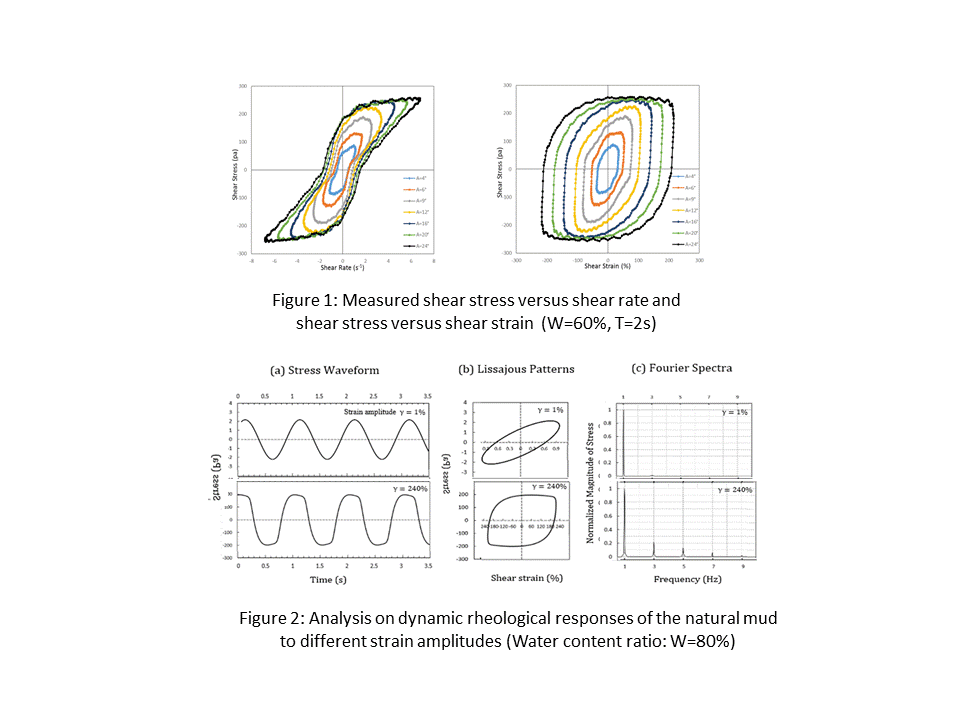
Rheological Responses of Soft Mud to Sinusoidal Water Waves
Intensive interactions between water waves and mud bed take place due to the existence of an overlying movable layer of soft mud which results in surface wave attenuation and mud mass transport, etc. Soft mud is a complex mixture of various clay mineral particles, organic matters, fine sand and water. The rheological properties of soft mud that govern its movement are greatly different from those of non-cohesive sediment. So far, most of the laboratory tests on the mud rheological properties were carried out by using the unidirectional rheometer which can only produce steady shears. The obtained soft mud rheological models in this way can not precisely represent its behavior under the oscillatory shear action.
In this study, a dynamic shear-controlled oscillatory viscometer that can generate oscillatory shear loads like the action of water waves is developed to investigate the rheological responses of soft mud to the sinusoidal waves. The in-situ soft mud taken from Lianyungang Port was used in the experiment. In order to clarify mud behaviors under different external loads in different depth along the consolidated bed, more than 1000 runs of laboratory tests were conducted by changing the water content ratio W of mud samples (from 60% to 200%), the amplitude A (from 2° to 24°) and period T (from 1s to 9s) of the oscillatory shear forces.
The measured data shows that under oscillatory forces, the relationships of the shear stress versus the shear rate and the shear stress versus the shear strain of the in-situ mud samples are featured by hysteresis loops showing very strong nonlinearity. By using Fourier transform method, the characteristics of the variations in first-harmonic storage modulus G` and loss modulus G`` , the stress waveform (stress vs. time), and the Lissajous patterns (stress vs. strain) are analyzed. It is revealed that under the small shear load, soft mud behaves like visco-elastic materials, whereas, beyond a certain shear load, the visco-plastic property dominates. In addition, the water content ratio as well as the amplitude and period of oscillatory shear load have significant influences on the soft mud rheological behaviors. This study deepens the understanding of rheological properties of soft mud under oscillatory load and could be used to better understanding the mud-wave interaction. Figure 1 and Figure 2 are typical experimental and analysed results.


Powered by Eventact EMS